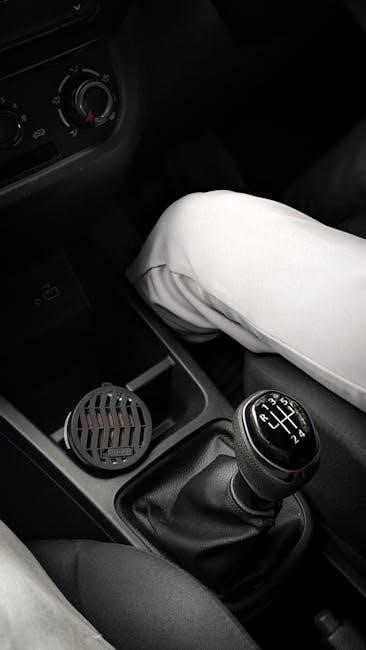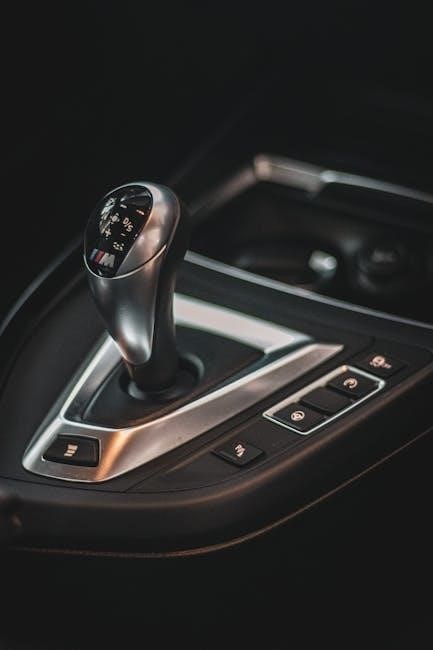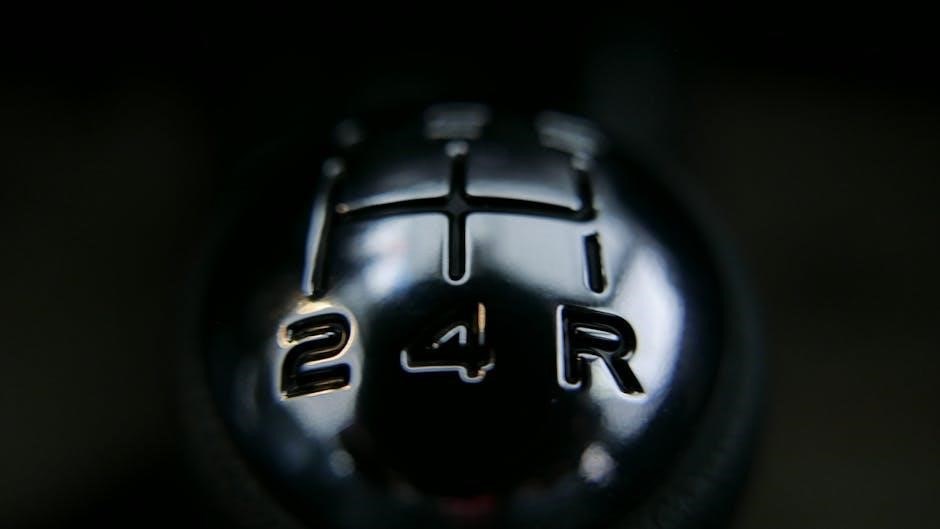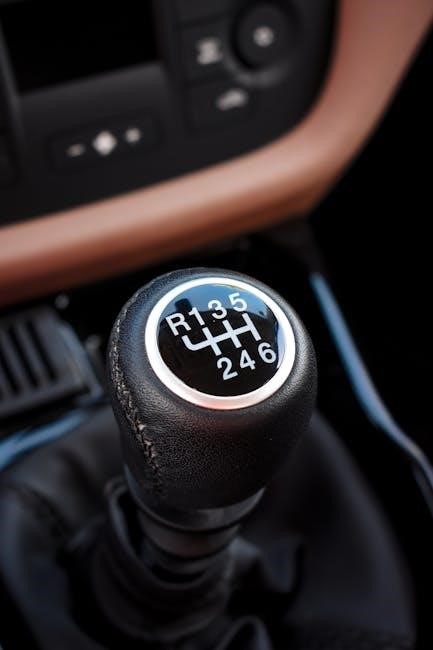Autostart technology offers convenience by allowing remote engine starting, but its application in manual transmission vehicles presents unique challenges. While less common, aftermarket solutions like Compustar enable safe installation with proper safety features.

Feasibility of Autostart in Manual Vehicles
While manufacturers rarely offer autostart for manual vehicles, aftermarket solutions like Compustar provide safe options. Installation requires careful consideration of safety features to ensure proper functionality and prevent accidental starts.
2.1. Availability from Manufacturers
Most car manufacturers do not offer autostart systems for manual transmission vehicles as a standard or optional feature. This is primarily due to the complexity of ensuring safe remote starting without driver intervention. While some high-end models may include advanced remote start technologies, these are typically reserved for automatic transmissions. However, there have been instances where certain models, such as the Jeep, have listed remote start as a feature, though this is often met with skepticism and may be a typographical error. Manufacturers generally avoid offering this feature for manual vehicles because of the inherent risks associated with remote starting a car in gear, which could lead to unintended movement. As a result, those interested in autostart for manual vehicles often have to rely on aftermarket solutions rather than factory-installed systems.
2.2. Aftermarket Solutions
For manual transmission vehicles, aftermarket solutions provide an alternative for those seeking autostart functionality. Brands like Compustar specialize in remote start systems designed for manual transmissions, offering advanced safety features to ensure proper operation. These systems typically include neutral gear detection, which verifies the vehicle is in neutral before starting, and clutch pedal monitoring to prevent accidental movement. Aftermarket kits often require additional components, such as bypass modules and sensors, to integrate seamlessly with the vehicle’s electronics. Installation complexity varies, but most systems are designed to work across various makes and models. While some installers may hesitate to fit autostart systems in manual vehicles due to potential risks, reputable aftermarket brands provide detailed instructions and support to ensure safe and reliable operation. These solutions cater to enthusiasts who want the convenience of remote starting without compromising the unique driving experience of a manual transmission. Professional installation is highly recommended to avoid complications and ensure optimal performance.
How Autostart Systems Work in Manual Cars
Autostart systems in manual transmission vehicles use advanced technology to detect neutral gear and monitor clutch pedal position, ensuring safe remote starts without accidental movement. Sensors verify the vehicle’s status before activation.
3.1. Remote Start Activation Process
Activating a remote start in a manual transmission vehicle involves several key steps. First, the user presses the remote start button, which sends a signal to the vehicle’s system. The system then checks if the vehicle is in neutral gear, using sensors connected to the gearshift or transmission to verify the position. If the vehicle is not in neutral, the system prevents starting to avoid unintended movement.
Next, the system evaluates the position of the clutch pedal, ensuring it is either pressed down or in a specific position as required by the remote start configuration. This prevents the vehicle from moving if the clutch is not properly engaged. Some systems may utilize an electronic clutch override to manage this process automatically.
After these safety checks, the system disengages the clutch if necessary and sends a signal to the engine to start. The remote start system also monitors additional safety parameters, such as the brake pedal, to ensure the vehicle remains stationary until the driver is ready to operate it. This comprehensive process ensures safe and reliable remote starting in manual transmission vehicles.
3.2. Role of Neutral Gear Detection
Neutral gear detection plays a critical role in ensuring the safe operation of autostart systems in manual transmission vehicles. Since manual cars require the clutch to be pressed and the gearshift to be in neutral before starting, the system must verify these conditions remotely. Sensors are installed to monitor the position of the gearshift, confirming that the vehicle is in neutral. This prevents the car from moving unexpectedly when the engine starts, as it would if it were in gear.
The detection mechanism typically involves electronic sensors or switches that communicate with the autostart module. These sensors ensure that the vehicle is properly secured in neutral, eliminating the risk of accidental forward or reverse motion. This safety feature is essential for manual transmissions, as it addresses the unique challenges of remote starting compared to automatic vehicles, which automatically recognize when they are in park.
Neutral gear detection is a fundamental component that enables the autostart system to function safely and reliably in manual vehicles, providing peace of mind for drivers who want the convenience of remote starting without compromising safety.

Safety Considerations
Safety is paramount when implementing autostart in manual vehicles. Neutral gear detection ensures the car doesn’t move during startup, while clutch pedal management prevents unintended engagement. Additional safeguards, like brake pedal confirmation, enhance security.
4.1. Neutral Gear Detection Systems
Neutral gear detection systems are critical for remote starting manual vehicles. These systems use sensors to ensure the transmission is in neutral, preventing unintended movement. A common method involves an electronic switch connected to the gear selector or a mechanical linkage that activates when the gearshift is in neutral. Some advanced systems integrate with the vehicle’s electronic control module (ECM) to monitor gear position accurately. Proper installation is essential to avoid safety risks, such as the car rolling or engaging gears unexpectedly. Aftermarket solutions, like Compustar, often include these systems to ensure safe operation. If the system detects any movement or the wrong gear, it aborts the start sequence. This ensures the vehicle remains stationary, enhancing overall safety and reliability of autostart functionality in manual transmissions.
4.2. Clutch Pedal Management
Clutch pedal management is crucial for autostart systems in manual vehicles to ensure safe and reliable operation. These systems often utilize a clutch override switch or sensor to bypass manual clutch engagement during remote starting. This prevents the need for the driver to press the clutch pedal, which is essential for starting the engine in neutral gear. Advanced systems may integrate with the vehicle’s electronic control module (ECM) to monitor clutch pedal position and ensure it is fully released before ignition. Safety features prevent the engine from starting if the clutch pedal is partially pressed or if the vehicle is not in neutral. Aftermarket solutions like Compustar incorporate specialized sensors and actuators to manage the clutch pedal effectively. Proper installation by skilled technicians is vital to avoid malfunctions and ensure the system works seamlessly with the vehicle’s existing mechanisms. Clutch pedal management systems are designed to enhance convenience while maintaining safety and reliability in manual transmission vehicles.
Installation Challenges
Installing autostart in manual vehicles requires expertise due to unique challenges. Specialized tools and knowledge are needed to integrate systems safely and effectively, ensuring proper function without compromising vehicle safety or performance.
5.1. Required Vehicle Modifications
Installing an autostart system in a manual transmission vehicle often requires specific modifications to ensure compatibility and safety. One common modification is the installation of a bypass module to integrate the remote start system with the vehicle’s immobilizer or security features. Additionally, a neutral gear detection sensor may need to be installed to confirm the vehicle is in neutral, preventing accidental starts in gear. In some cases, wiring harnesses must be upgraded or reconfigured to support the autostart functionality. Furthermore, certain vehicles may require clutch pedal management systems or specialized interfaces to ensure the clutch is properly disengaged during remote starts. These modifications are critical to maintaining safety and ensuring the system operates reliably. While some vehicles may require minimal changes, others could need extensive wiring or hardware upgrades, making professional installation essential for optimal performance and reliability.
5.2. Importance of Installer Expertise
The successful installation of an autostart system in a manual transmission vehicle heavily depends on the expertise of the installer. Manual transmissions require precise handling of components like the clutch and gearshift, which are not present in automatic vehicles. An inexperienced installer may overlook critical safety features, such as neutral gear detection or clutch pedal management, leading to potential malfunctions or accidents. Expert installers understand how to integrate the remote start system seamlessly with the vehicle’s existing electronics, ensuring that all safety protocols are maintained. They are also familiar with troubleshooting common issues, such as engine start failure or safety feature malfunctions, which are more complex in manual vehicles. Proper installation not only ensures reliability but also prevents voiding the vehicle’s warranty or causing costly damage. Therefore, it is crucial to choose a qualified technician with experience in manual transmission autostart systems to guarantee a safe and efficient setup.
Benefits of Autostart in Manual Vehicles
Autostart systems in manual transmission vehicles offer several benefits, enhancing both convenience and comfort. For one, they allow drivers to start the engine remotely, enabling preheating or cooling of the cabin before entering the vehicle. This is particularly advantageous in extreme weather conditions, ensuring a comfortable driving environment from the start. Additionally, autostart systems can simplify the driving experience by reducing the need for manual clutch and gear operations during initial startup. This feature is especially useful in heavy traffic or tight parking spaces, where repeated restarts can be inconvenient. Furthermore, autostart technology promotes consistency in engine performance, ensuring the vehicle is ready to drive immediately. While manual transmissions are often praised for their control and engagement, integrating an autostart system adds a layer of modern convenience without sacrificing the unique driving experience associated with manual vehicles. Overall, autostart systems provide a practical solution for drivers seeking to blend traditional driving dynamics with contemporary technology.

Troubleshooting Common Issues
Common issues include engine start failure, neutral gear detection problems, and clutch malfunctions. Troubleshooting involves checking sensors and wiring, ensuring proper Neutral gear detection and clutch pedal operation.
7.1. Engine Start Failure
Engine start failure in manual transmission vehicles with autostart systems often stems from improper gear detection or clutch pedal issues. If the system fails to detect the vehicle is in neutral, it may prevent starting. Similarly, if the clutch pedal is not properly managed, the engine won’t engage. Faulty wiring or sensors can also disrupt communication between components, leading to failure. In some cases, the remote start system might not account for the ignition timing or glow plug preheating required for diesel engines. Troubleshooting involves checking the neutral gear sensor, clutch pedal switch, and wiring connections. Ensuring the battery is fully charged and the system is calibrated correctly is also crucial. If issues persist, consulting a professional installer or manufacturer guidelines is recommended to resolve the problem effectively.
7.2. Safety Feature Malfunctions

Safety feature malfunctions in autostart systems for manual transmissions can pose significant risks. Issues such as faulty neutral gear detection or improper clutch pedal monitoring may lead to unintended engine starts while the vehicle is in gear, potentially causing it to move unexpectedly. Symptoms of such malfunctions include the engine failing to start or starting erratically. In some cases, the system might bypass critical safety protocols, such as brake pedal or clutch engagement checks, increasing accident risks. Users may notice warning lights or error messages on their remote start fobs, indicating a problem. Addressing these issues requires inspecting the sensors, wiring, and software calibration. Improper installation or worn-out components often contribute to these failures. Regular maintenance and professional checks are essential to ensure the system operates safely and reliably. Always refer to the manufacturer’s guidelines for troubleshooting and repairs to prevent further complications.


Future Trends in Autostart Technology
Future advancements in autostart technology for manual transmissions aim to enhance convenience, safety, and integration with modern vehicles. A key trend is the development of smarter systems that utilize advanced sensors and AI to detect the vehicle’s state more accurately. These systems will better communicate with the vehicle’s ECU to ensure seamless operation. Another promising innovation is the integration of smartphone apps, enabling users to start their cars remotely while receiving real-time feedback on the vehicle’s status. Additionally, manufacturers are exploring biometric authentication to add an extra layer of security. Safety will remain a priority, with improved fail-safes to prevent accidental starts. As electric vehicles grow in popularity, autostart systems will adapt to support their unique electrical architectures. Overall, the future of autostart technology for manual transmissions lies in creating a user-friendly, secure, and reliable experience that aligns with the evolving needs of drivers and the automotive industry.
Autostart technology for manual transmission vehicles offers a blend of convenience and functionality, despite its unique challenges. While manufacturers rarely offer this feature, aftermarket solutions like Compustar provide safe and reliable options. Proper installation by skilled technicians is crucial to ensure functionality and safety. The system’s ability to detect neutral gear and manage the clutch pedal effectively addresses potential risks. Users must adhere to safety protocols to prevent accidents. Overall, autostart systems for manual transmissions are viable with the right setup and precautions. As technology advances, future innovations promise enhanced safety, integration, and user experience, making autostart more accessible and appealing for manual transmission vehicle owners.
